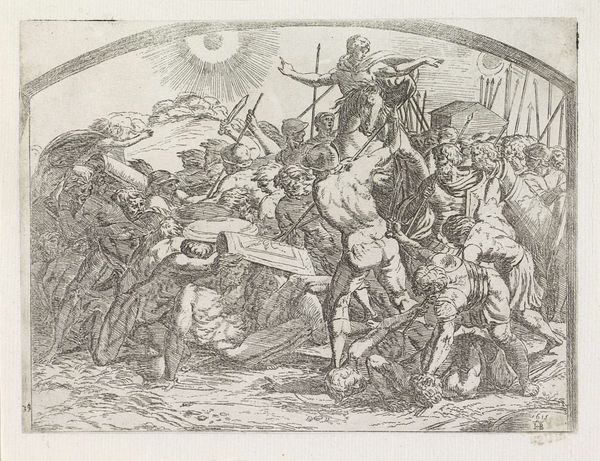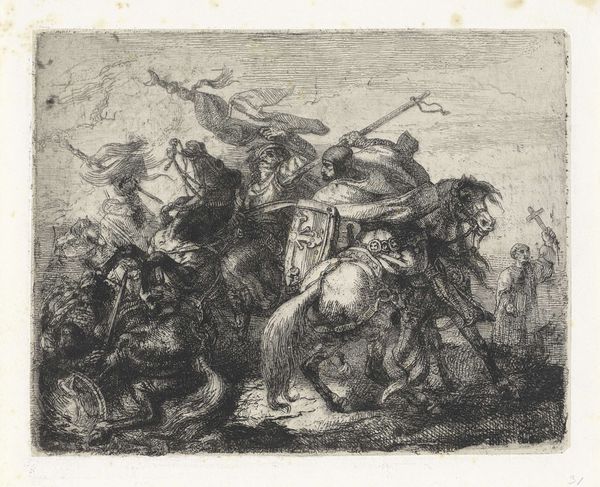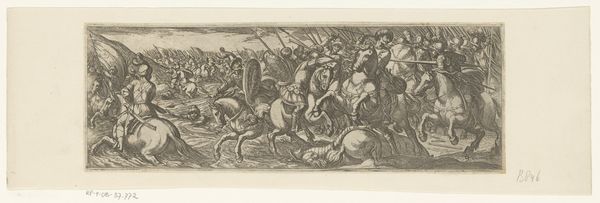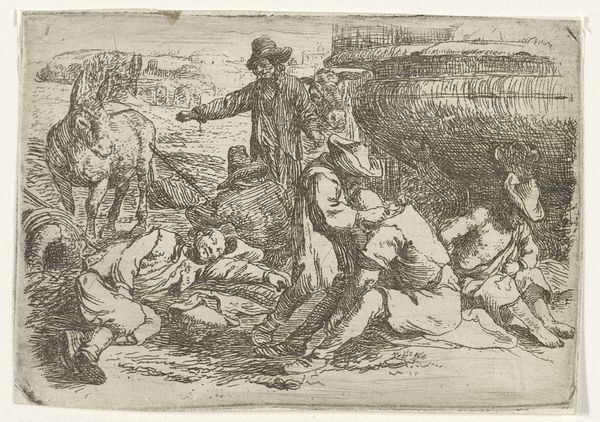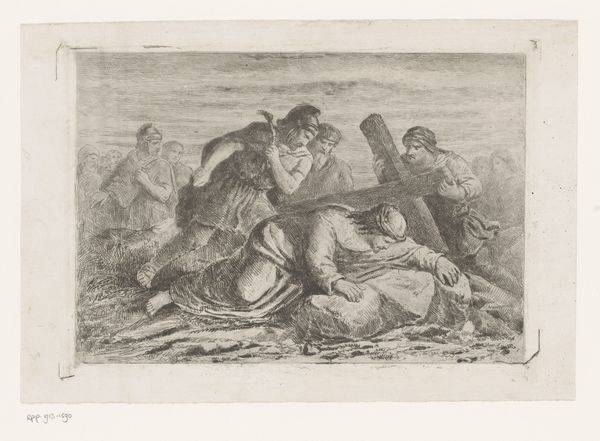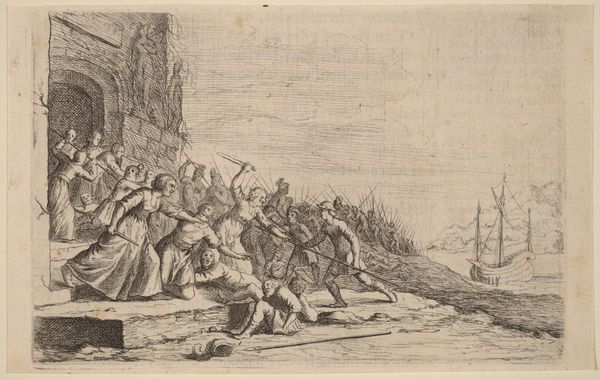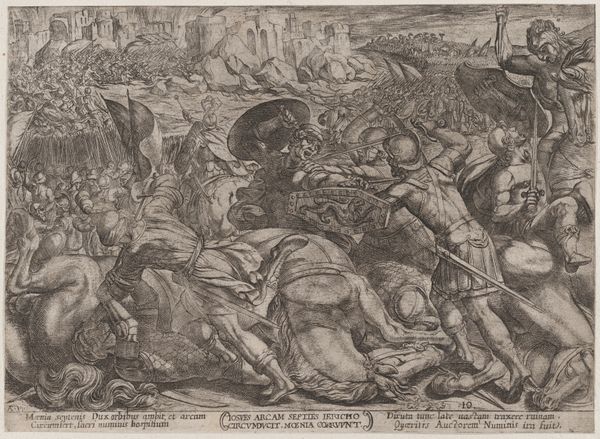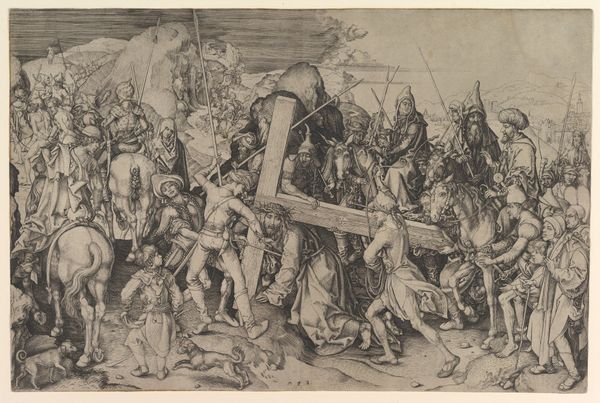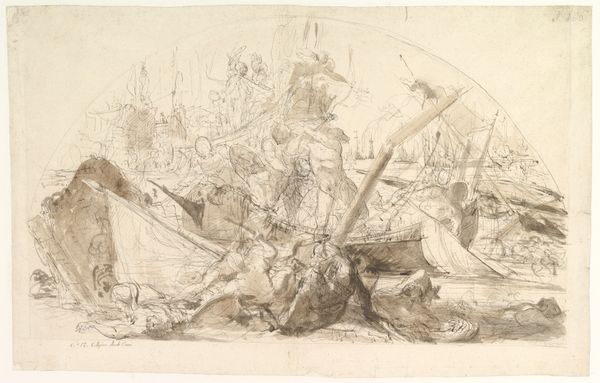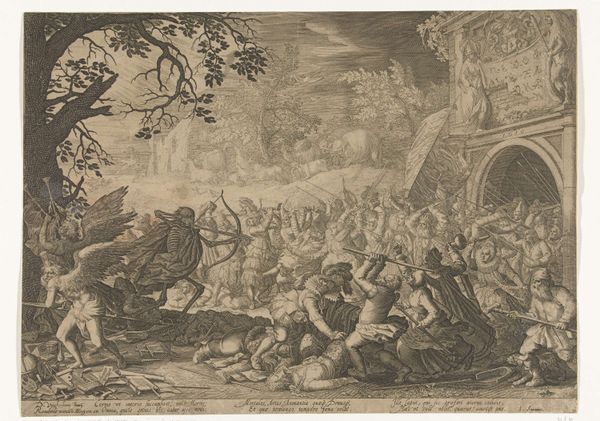
The Triumph of Death: Proclamation (Le triomphe de la mort: La proclamation)
0:00
0:00
print, etching
#
allegory
#
narrative-art
#
baroque
# print
#
etching
#
figuration
#
history-painting
Copyright: National Gallery of Art: CC0 1.0
Alphonse Legros created "The Triumph of Death: Proclamation" as an etching, likely during the late 19th century. Legros lived through significant political and social upheaval in France, including the Franco-Prussian War and the Paris Commune, events which profoundly influenced his art. In this nightmarish scene, Legros eschews traditional heroic narratives. Death is not a noble figure, but a grotesque harbinger riding through a crowd of the doomed, their faces etched with despair and resignation. The figures in the crowd represent a cross-section of society, yet death does not discriminate. The expressions and gestures of the figures convey a deep emotional impact: there’s a woman in the lower left corner of the piece clasping her head in anguish, while to the right a figure reaches out, perhaps in supplication or desperation. Legros challenges viewers to confront the universality of death and the fragility of human existence. It is a stark commentary on mortality, suffering, and the human condition amid historical turmoil.
Comments
No comments
Be the first to comment and join the conversation on the ultimate creative platform.



